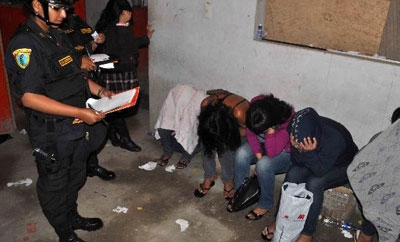Police in Peru have rescued around 2,000 human trafficking victims in the past two years according to the government, underscoring the depth of the problem in a country where the trade is fueled by domestic industries such as mining.
Of the victims rescued in the two years up to June 2013, 42 percent were minors, said Patricia Figueroa Valderrama, the secretary general of the Interior Ministry, speaking on Peru’s National Anti-Human Trafficking Day, September 23.
During that same time period, the government issued 26 sentences against people linked to 101 judicial processes for human trafficking, reported El Peruano.
The secretary general also noted that 25 women were rescued from situations of forced labor and sexual exploitation in the Madre de Dios region in southern Peru on September 22.
The Interior Ministry has a budget of around $145,000 allocated to combating trafficking in 2013, and has launched campaigns in various parts of the country aimed at promoting prevention and education about the crime.
InSight Crime Analysis
Peru is identified as a source, transit and destination country for human trafficking in the US State Department’s most recent Trafficking in Persons Report. While some victims end up in other countries in the region, including Ecuador, Argentina, Brazil and Chile, many more stay within the country. The majority of victims are women.
The mining sector helps to fuel the trade, with the Madre de Dios region near the border with Brazil and Bolivia a major destination for trafficking victims of both forced labor and forced prostitution. As reported by one NGO, a lack of government presence in the region facilitates the trade, and means victims have little access to health services.
La Rinconada, a mining town in the Puno region near the Bolivian border, is also thought to be a major center of sexual exploitation, with up to 4,000 underage victims held in the town, many of them Bolivians lured to the region on false promises of lucrative jobs.
According to the government, however, the northeastern Loreto department had the most reported human trafficking cases in 2012, representing 12 percent of the country’s total, followed by Lima and Cusco. Iquitos, the capital of Loreto, is also a major source point for human trafficking, with victims shipped out by riverboat to port town Yurimaguas and from there to various other regions of the country.

